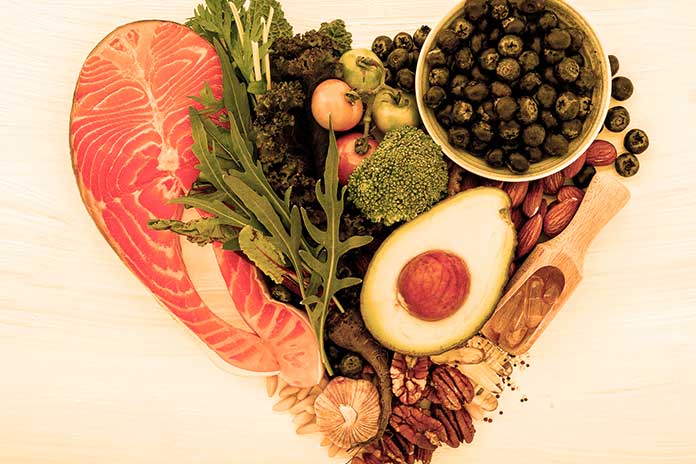There is a saying that the shortest way to the heart is through the stomach. Despite the romantic sense, it can refer to questions about the best foods for the heart and the worst foods for the heart! Although delicious foods always have great power of seduction.
In addition to all the affective side of love and affection that the heart symbol represents, it is a primordial organ for human existence, and our eating habits are an essential part of well-being.
So an unbalanced diet, sedentary lifestyle, and smoking can cause cardiovascular diseases such as ischemia or stroke.
Currently, cardiovascular diseases are still the leading cause of death in Latin America, with cholesterol, triglycerides, and high blood pressure as the main risk factors caused by a diet rich in salt, fats, and refined sugars.
Foods that strengthen the heart contain Fiber, vitamins C and E, Sodium, Magnesium, Potassium, and, above all, Omega 3.
Discover The Best Foods For The Heart
Following a diet rich in Omega 3 can reduce the incidence of cardiovascular disease by up to 70%.
Omega 3 is a fatty acid belonging to the group of polyunsaturated fats that support heart health in many ways:
- Lowers triglycerides, a type of fat in the blood.
- Reduces the risk of developing an arrhythmia (irregular heartbeat).
- Decreases plaque buildup, a fat, cholesterol, and calcium substance that hardens and blocks arteries.
- It helps to lower blood pressure.
These fatty acids should be part of 5% to 10% of our total calories. WHO points out that adults should consume a minimum of 250 milligrams daily of EPA and DHA (primary acids found in Omega 3) or up to 2 grams if they already have risk factors. However, not all of us can consume the recommended intake. That’s why we should emphasize including Omega 3 foods in our diet.
Tips For Heart-Healthy Foods
Oily Fish
Salmon, albacore tuna, sardines, or mackerel are part of this type of fish that is an excellent source of Omega 3.
Egg
Source of Omega 3, specialists recommend an intake of 3 to 7 servings per week, taking into account that a serving is equivalent to between 20 and 30 grams. Its excessive consumption is not recommended, as it is high in calories.
Chia Seeds
It is a food rich in iron, calcium, magnesium, zinc, and, of course, the Omega 3 fatty acid. In addition, it is gluten-free. The recommended daily allowance for an average adult is 13 to 15 grams (2 tablespoons), for less than 6 grams per day.
Chocolate
Dark chocolate, with at least 85% cocoa, activates blood circulation and helps to delay aging. Nutritionists recommend about 6 grams a day.
Broccoli
Great food that provides folic acid is high in Fiber and a source of iron, calcium, vitamin K, zinc, and antioxidants. In addition, it is low in calories and fat.
Vegetables
Legumes such as chickpeas, lentils, and beans help reduce bad cholesterol as they contain fiber and are low in fat. In fact, according to the Spanish Heart Foundation (FEC), consuming them regularly reduces the risk of suffering a heart attack by 14%.
Strawberries
In addition to being a great source of antioxidants and vitamins, its flavonoid composition helps protect arteries and the inner layer of blood vessels and control blood pressure.
Garlic
Eating garlic regularly can help improve blood circulation, lowering blood pressure levels. All over the world, there is research on the properties of raw garlic and its benefits, which reveals its therapeutic potential. Garlic stimulates the gastrointestinal mucosa, which causes increased digestive secretions. This leads to better preparation of the digestive tract for the digestion of food.
Adding garlic to recipes is very good for our defenses, as it is antiviral, antifungal, and antibacterial.
A head of garlic contains approximately 1% of the sulfuric amino acid alliin, which is converted to allicin when this food is crushed. Allicin and its derivatives, ajones, are responsible for its particular smell. Likewise, garlic contains proteinogenic amino acids, various sulfate compounds, and inulin-type fructans.
Also Read: Food Reeducation: How To Do It And Lose Weight In A Healthy Way


